Chapter 3: Egyptian Art
0.0(0)
0.0(0)
Card Sorting
1/40
Study Analytics
Name | Mastery | Learn | Test | Matching | Spaced |
|---|
No study sessions yet.
41 Terms
1
New cards
Pharaoh
a king of ancient Egypt
2
New cards
Aton
Represented as a sun disk emanating rays.
3
New cards
Rosetta Stone
Modern Egyptology began with the 1799 discovery of the _____, from which hieroglyphics could, for the first time, be translated into modern languages.
4
New cards
King Tutankhamun
The feverish scramble to uncover Egyptian artifacts culminated in 1922 with the discovery of _______’s tomb by Howard Carter.
5
New cards
Necropolis
literally, a “city of the dead,” a large burial area
6
New cards
Mastabas
A simple tomb that has four sloping sides and an entrance for mourners to bring offerings to the deceased.
7
New cards
Engaged column
a column that is not freestanding but attached to a wall
8
New cards
Reserve column
a column that is cut away from rock but has no support function
9
New cards
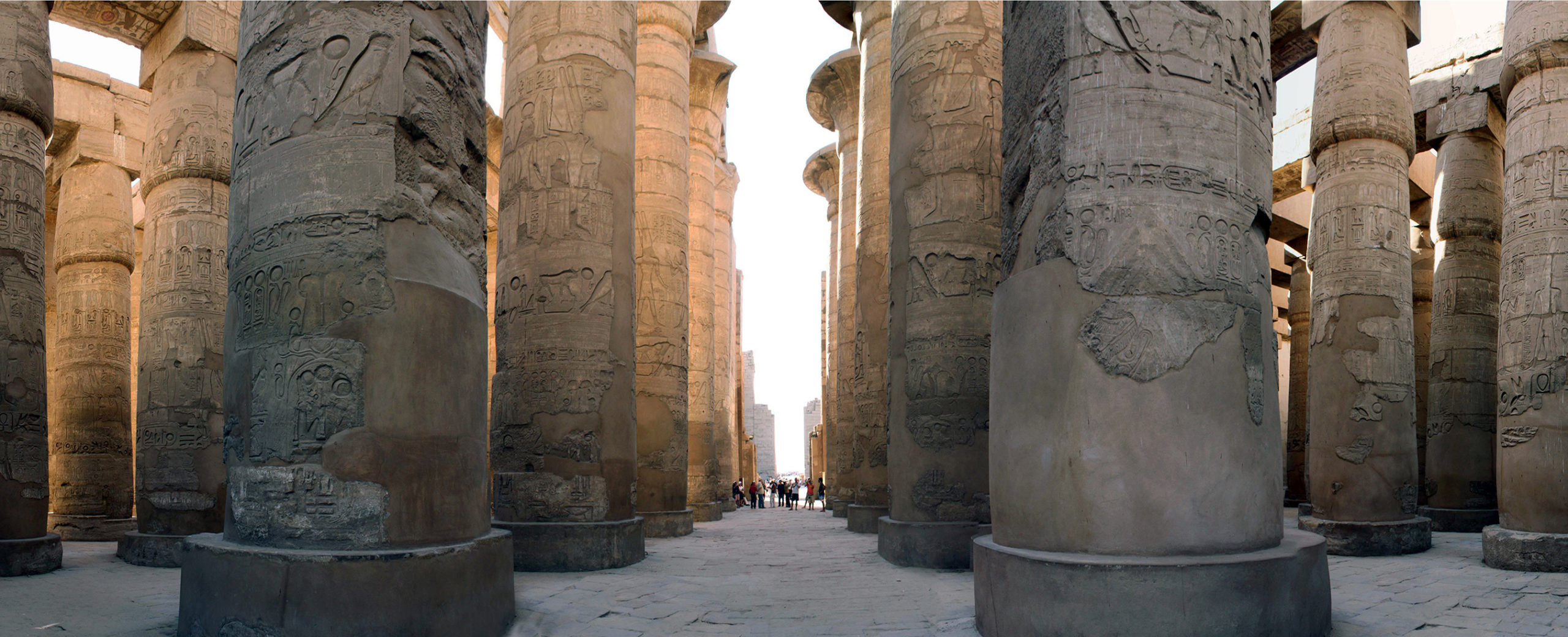
hypostyle hall
The god was housed in a sacred area just beyond, which was surrounded by a forest of columns, called a \____.
10
New cards
clerestory
Some of the columns were higher than others, allowing limited light and air to enter the complex, an area called a \___.
11
New cards
Papyrus
a tall aquatic plant whose fiber is used as a writing surface in ancient Egypt
12
New cards
Sarcophagi
These are stone coffins.
13
New cards
Hieroglyphics
It describes the deceased and his or her accomplishments in great detail, without which the dead would have incomplete afterlives.
14
New cards
Relief sculpture
sculpture which projects from a flat background.
15
New cards
bas-relief
A very shallow relief sculpture
16
New cards
Ground line
a baseline upon which figures stand
17
New cards
Register
a horizontal band, often on top of another, that tells a narrative story
18
New cards
Ka
the soul, or spiritual essence, of a human being that either ascends to heaven or can live in an Egyptian statue of itself
19
New cards
Axial plan
a building with an elongated ground plan
20
New cards
Pylon
a monumental gateway to an Egyptian temple marked by two flat, sloping walls between which is a smaller entrance
21
New cards
Clerestory
a roof that rises above lower roofs and thus has window space beneath carved into a surface so that the figures seem to project forward
22
New cards
Sunken relief
a carving in which the outlines of figures are deeply
23
New cards
Peristyle
a colonnade surrounding a building or enclosing a courtyard
24
New cards
Ankh
an Egyptian symbol of life
25
New cards
Amarna style
art created during the reign of Akhenaton, which features a more relaxed figure style than in Old and Middle Kingdom art
26
New cards
Ammit
The hippopotamus/lion figure; between the scales, will eat the heart of an evil soul.
27
New cards
Thoth
A god who has the head of a bird; the stenographer writing down these events in the hieroglyphics that he invented.
28
New cards
Osiris
god of the underworld, enthroned on the right; will subject the deceased to a day of judgment.
29
New cards
Hunefer
A scribe who had priestly functions.
30
New cards
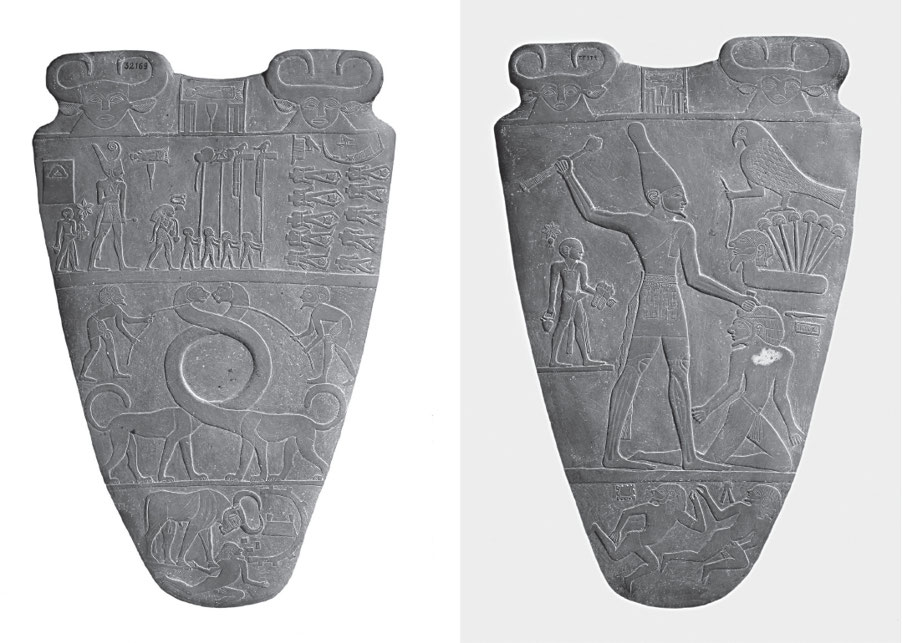
Palette of King Narmer
* Represents the unification of Upper and Lower Egypt under one ruler
* Schematic lines delineate in the muscle structure
* Hieroglyphics identify him in the cartouche
* used to prepare eye makeup | commemorative
* Schematic lines delineate in the muscle structure
* Hieroglyphics identify him in the cartouche
* used to prepare eye makeup | commemorative
31
New cards
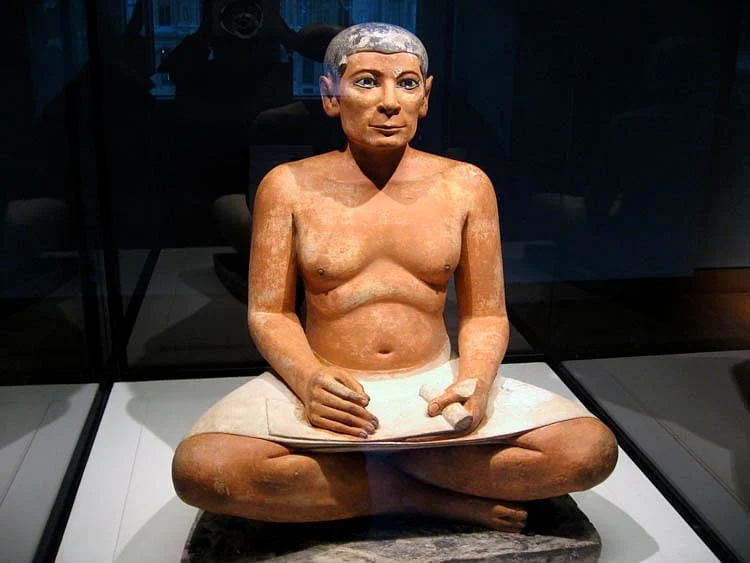
Seated Scribe
* Not a pharaoh
* has high cheekbones, hollow cheeks, and a distinctive jawline.
* Created for a tomb at Saqqara as a provision for the ka.
* has high cheekbones, hollow cheeks, and a distinctive jawline.
* Created for a tomb at Saqqara as a provision for the ka.
32
New cards
Menkaura, Khafre and Khufu
Name of the Three Great Pyramids
33
New cards

Great Pyramids
* Giant monuments to dead pharaohs
* Preservation of the body and tomb contents for eternity.
* Served as the king’s palace in the afterlife.
* shape must have been influenced by a ***benben***.
* Preservation of the body and tomb contents for eternity.
* Served as the king’s palace in the afterlife.
* shape must have been influenced by a ***benben***.
34
New cards
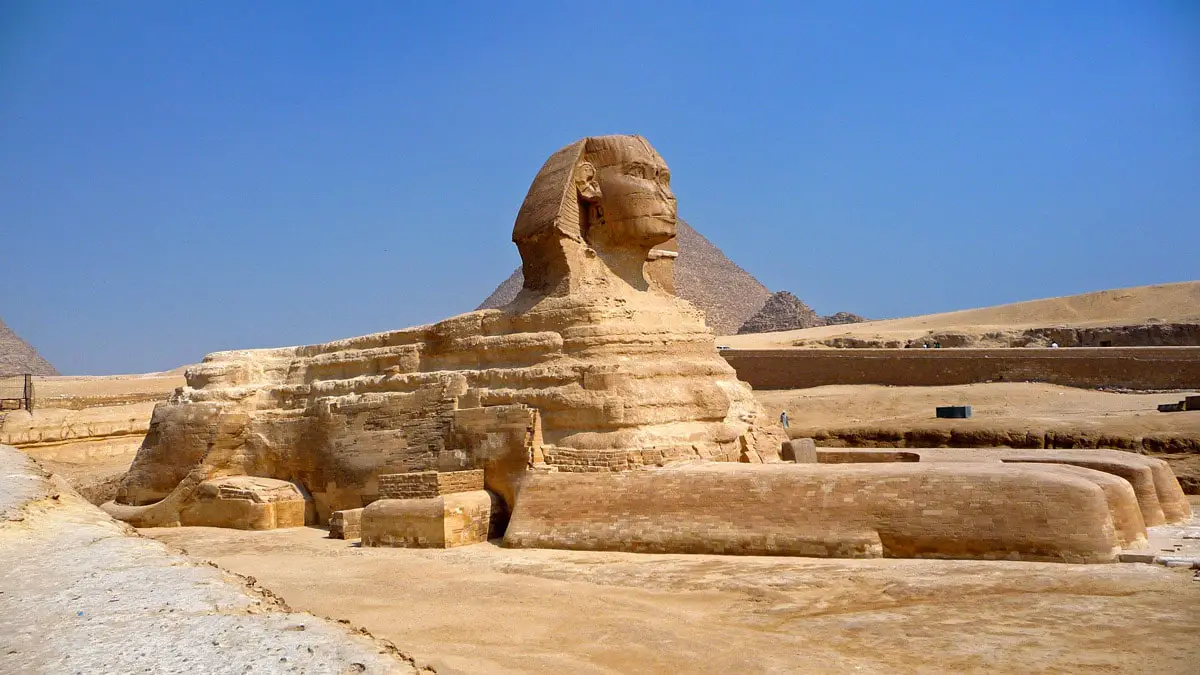
Great Sphinx
* Carved in situ from a huge rock
* Body of a lion, head of a pharaoh/god.
* protecting the pyramids behind it
* Body of a lion, head of a pharaoh/god.
* protecting the pyramids behind it
35
New cards
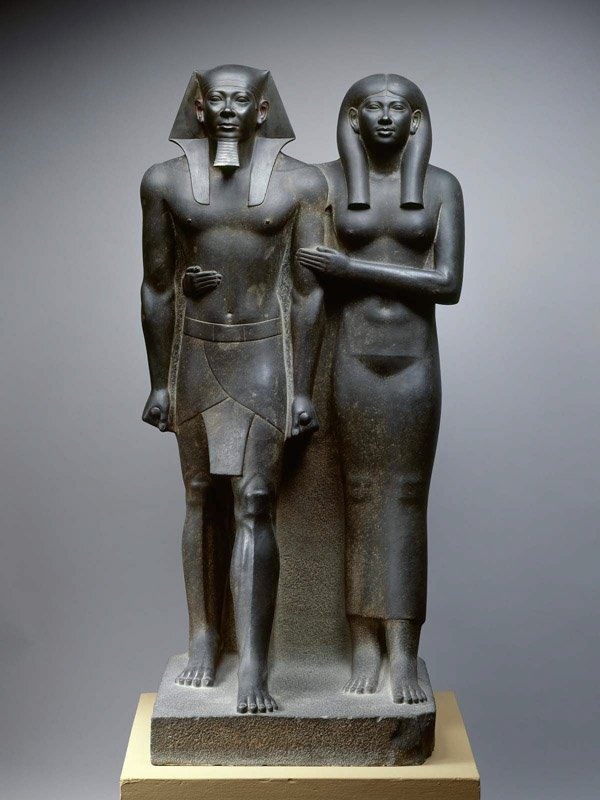
King Menkaura and queen
* two figures attached to a block of stone
* seem to stride forward; simultaneously are anchored to the stone behind
* receptacle for the ka of the pharaoh and his queen.
* seem to stride forward; simultaneously are anchored to the stone behind
* receptacle for the ka of the pharaoh and his queen.
36
New cards
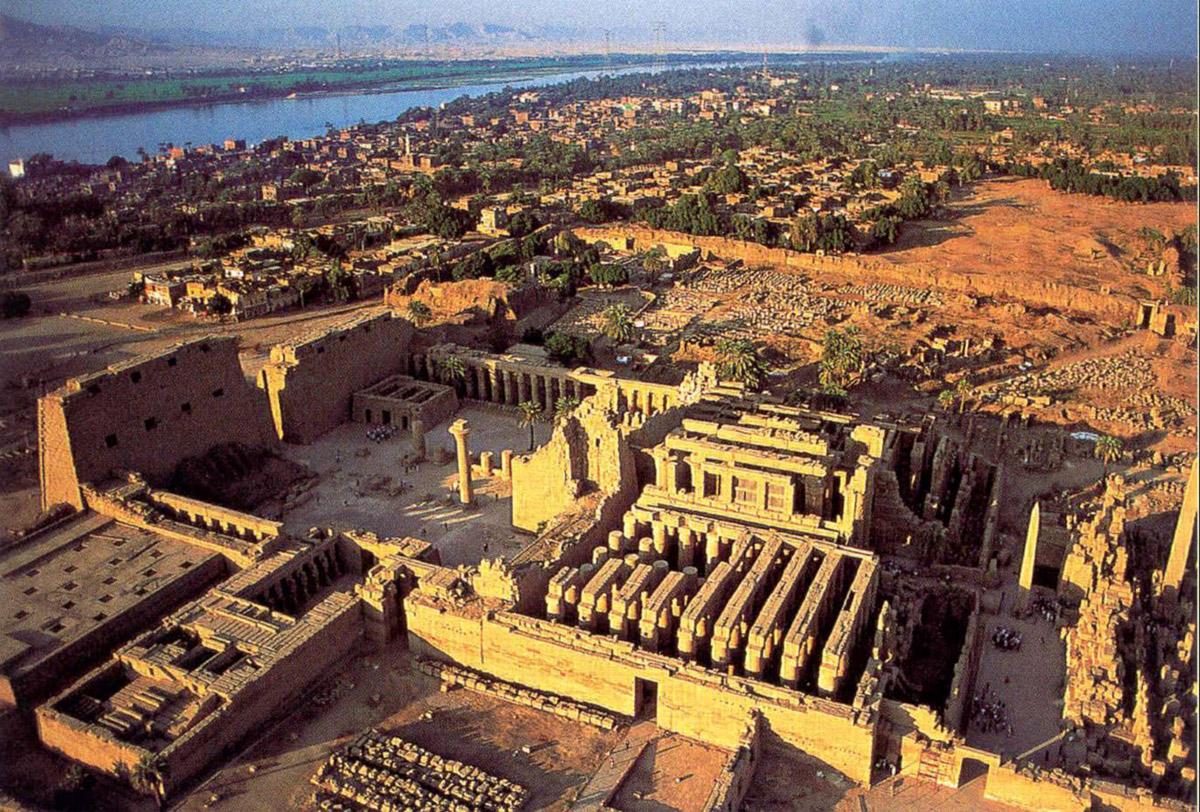
Temple of Amun-Re
* Axial Plan
* Pylon Temple | Hypostyle halls
* Massive lintels, columns.
* temple for the worship of a god.
* temple represents the beginnings of the world
* Pylon Temple | Hypostyle halls
* Massive lintels, columns.
* temple for the worship of a god.
* temple represents the beginnings of the world
37
New cards
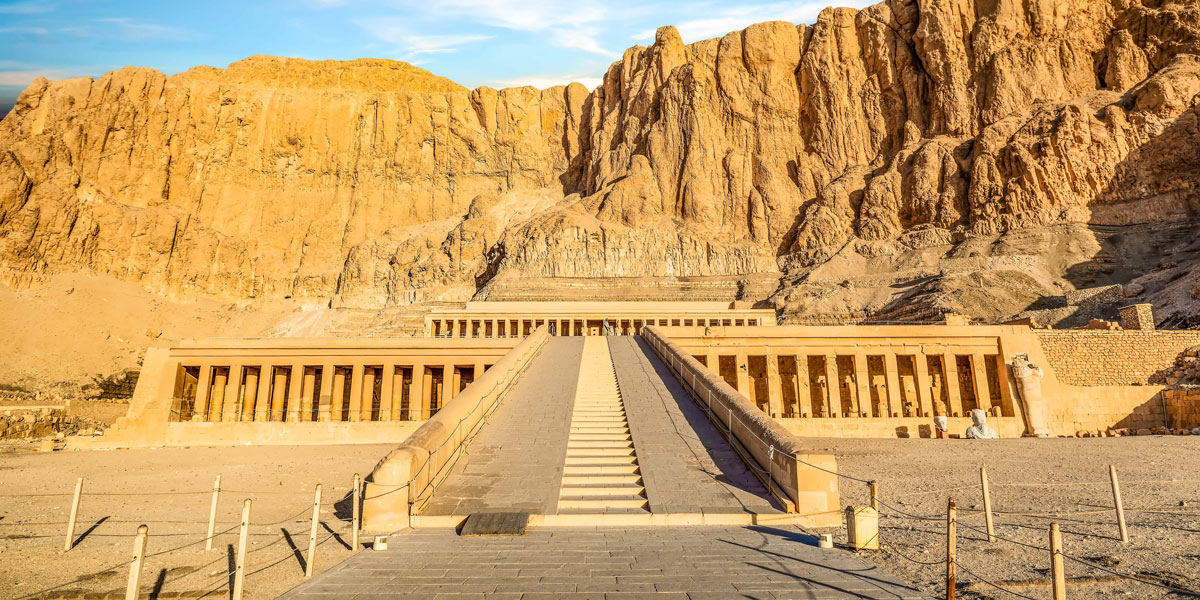
Mortuary temple of Hatshepsut
* A sandstone partly carved into a rock cliff
* Three colonnaded terraces and two ramps.
* long horizontals and verticals of the terraces and colonnades repeat the patterns of the cliffs behind
* patterns of dark and light in the colonnade are reflected in the cliffs.
* Three colonnaded terraces and two ramps.
* long horizontals and verticals of the terraces and colonnades repeat the patterns of the cliffs behind
* patterns of dark and light in the colonnade are reflected in the cliffs.
38
New cards
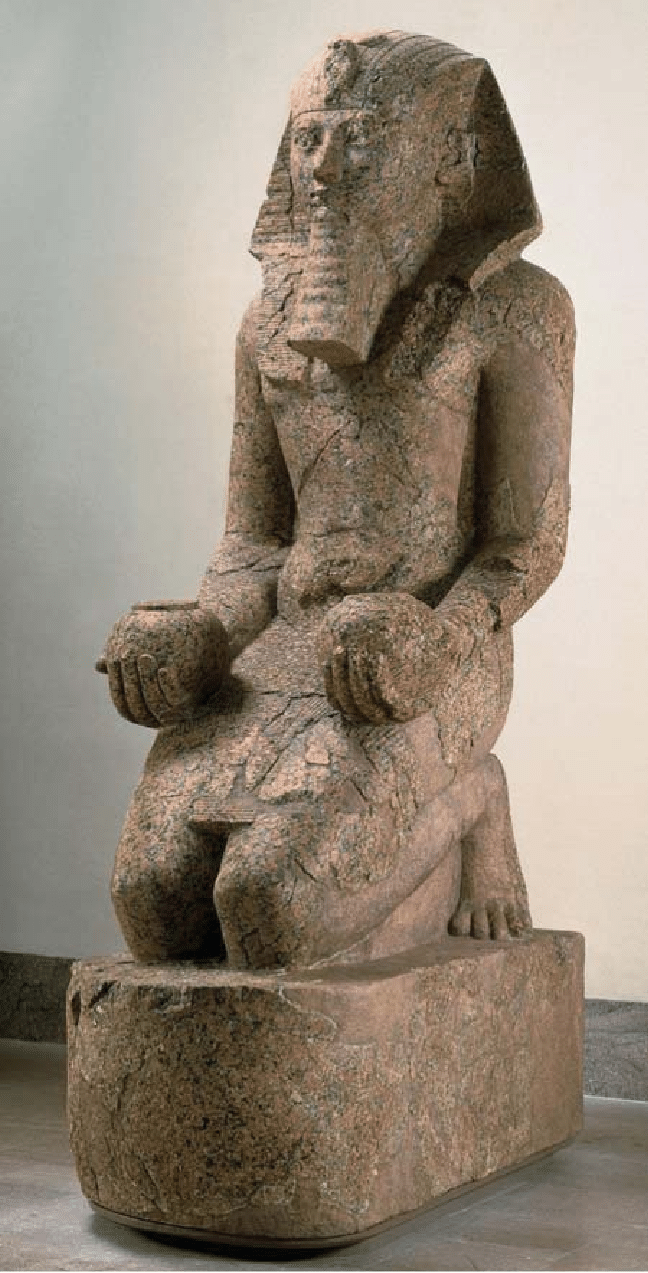
Kneeling statue of Hatshepsut
* Made of red granite
* Male pharaonic attributes
* Wears the white crown of Upper Egypt.
* depicted in male costume of a pharaoh
* Male pharaonic attributes
* Wears the white crown of Upper Egypt.
* depicted in male costume of a pharaoh
39
New cards
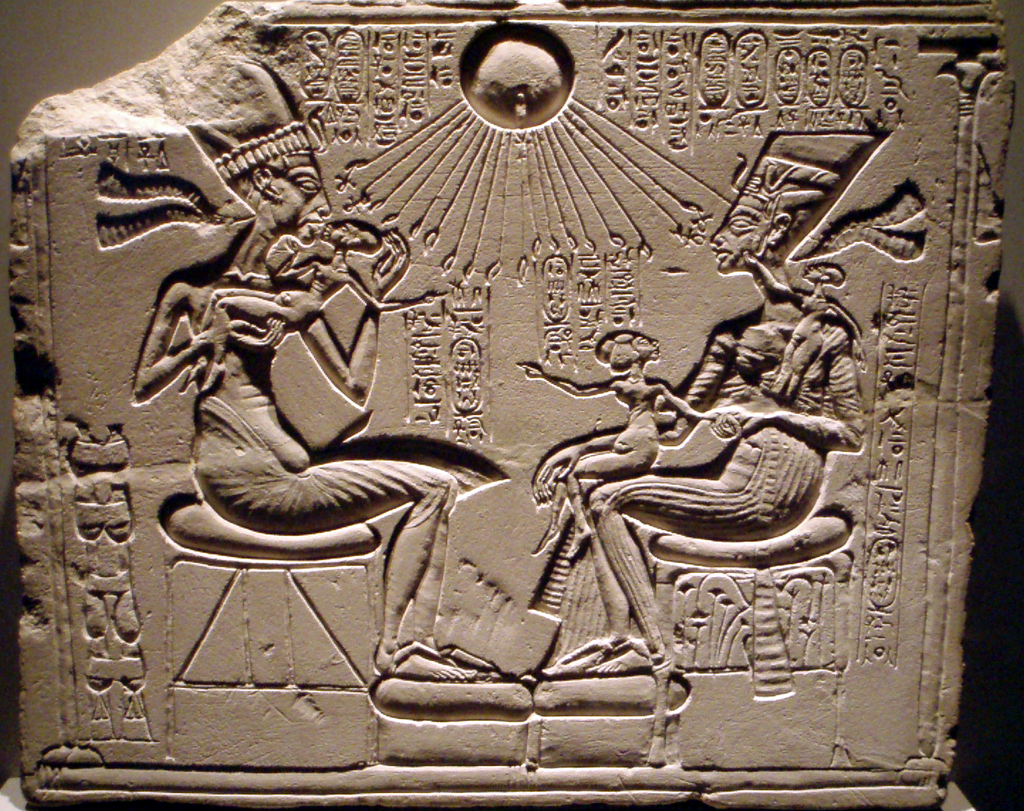
Akhenaton, Nefertiti, and three daughters
* Amarna Style
* a sunken relief
* state religion was changed by Akhenaton to the worship of Aton
* having a private relationship with their new god
* a sunken relief
* state religion was changed by Akhenaton to the worship of Aton
* having a private relationship with their new god
40
New cards
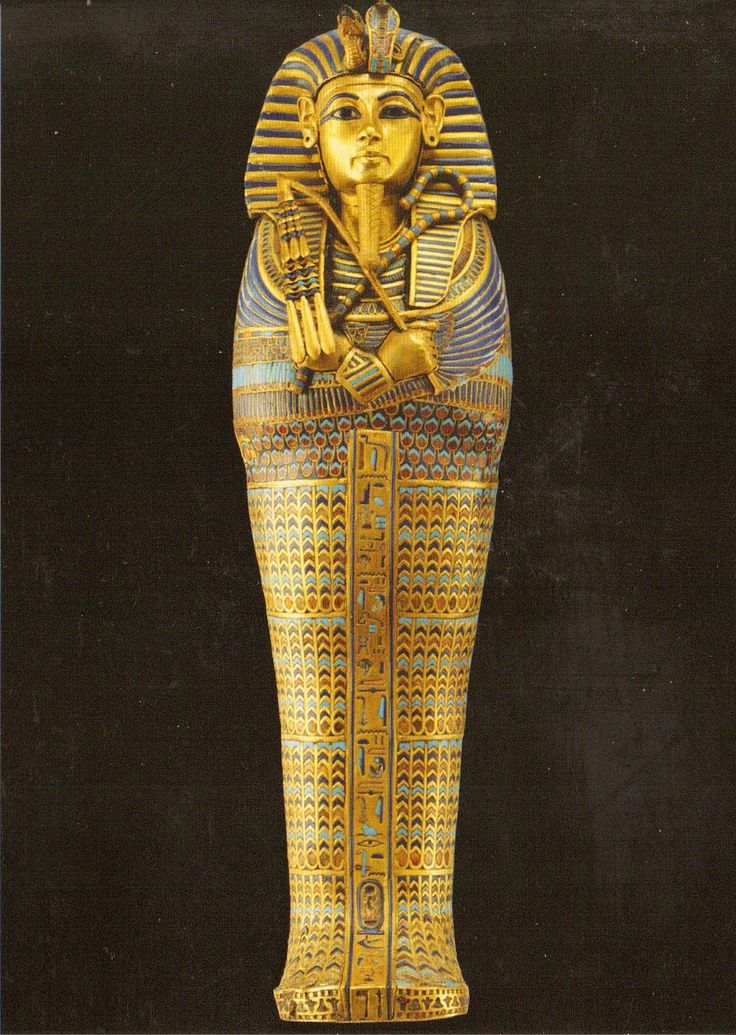
Innermost coffin of King Tutankhamun’s tomb
* A gold with an inlay of enamel and semi-precious stones
* Smooth, idealized features on the mask
* Holds a crook and a flail, symbols of osiris
* buried with 143 objects
* Smooth, idealized features on the mask
* Holds a crook and a flail, symbols of osiris
* buried with 143 objects
41
New cards

Last judgment of Hunefer
* Narrative on a uniform register
* Illustration from the Book of the Dead
* top register - white at left before a row of judges
* main register - Anubis leads the deceased into a hall
* Illustration from the Book of the Dead
* top register - white at left before a row of judges
* main register - Anubis leads the deceased into a hall